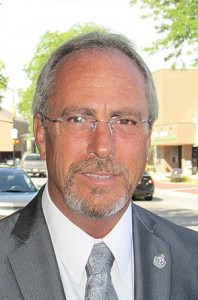Editor’s Note: This is an opinion column by Mayor Randy Hope.
During the past year Chatham-Kent was able to accomplish its goal of investing in local infrastructure and the economy while at the same time making great strides in reducing our municipal debt.
 As any homeowner will tell you, it’s not easy to put a new roof on the house and put money away in savings at the same time, but we’ve been able to do that by adhering to a long-term plan and taking advantage of senior government level funding. We’ve set strategies and priorities and we have stuck with them.
As any homeowner will tell you, it’s not easy to put a new roof on the house and put money away in savings at the same time, but we’ve been able to do that by adhering to a long-term plan and taking advantage of senior government level funding. We’ve set strategies and priorities and we have stuck with them.
In 2010 our municipal debt (including PUC was $161 million). It has been consistently dropping since and at the end of this year it will be $86 million, a decrease of $75 million during the past seven years.
At the same time, we invested more than $60 million in infrastructure this year.
We undertook more than two dozen infrastructure projects including reconstruction of Richmond Street and Grand Avenue in Chatham, McNaughton Avenue and Murray Street in Wallaceburg and replacement of sidewalks in downtown Chatham.
Dundas and Murray Street bridges in Wallaceburg were completed, the 5thStreet Bridge in Chatham will be completed next year and rural bridges in Camden, Dover, Tilbury East, Orford and the former Chatham Township were repaired and replaced.
Significant improvements were undertaken in water and waste water treatment and delivery facilities in Thamesville, Ridgetown, Highgate, Wallaceburg, Blenheim and Chatham.
Investment in our community is a two-way street as evidenced by the fact that 995 building permits for more than $144 million in construction have been issued this year. This magnitude of investment shows a strong level of confidence in our community. That total is a major increase from the $90.5 million last year.
We’ve seen strong growth in the greenhouse industry; IATGlobal a major automotive manufacturing firm has just broken ground on a $6 million facility in the Bloomfield Business Park and firms such as YA Canada are hiring hundreds of workers.
The most recent numbers show that unemployment dropped below six per cent in Chatham-Kent for just the second time in the last 11 years. We near nearly 50,000 people employed and we continue to have job fairs as employers look to fill hundreds of vacancies.
As part of the Thames River Phosphorus Reduction Collaborative and the The Great Lakes and St. Lawrence Cities Initiative, we’re working hard to ensure the protection of water, our greatest natural resource.
We’ve supported efforts by Union Gas to expand its supply throughout Chatham-Kent through the Panhandle and other projects and we’re committed to increasing high speed Internet services throughout Chatham-Kent through our participation in the Southwestern Integrated Fibre Technology Program (SWIFT).
We’re in the process of finalizing a bylaw for housing and room rentals, a much needed step as our community evolves.
I am very proud that the hard work of our Employment & Social Services Division staff was recognized this year with an award for its homeless response line.
The Ontario Works Case load continues to decline, with a 5.6 per cent reduction in the past year. The present caseload is approximately 2,700 cases. It peaked in 2010 with 3,400 cases.
The number of cases exiting Ontario Works to employment increased by 25 per cent in 2017.
We were able to complete CKPlan 2035, the blueprint for what we want our community to become during the next generation. We’re focusing on economic prosperity, environmental sustainability, people and culture and building a healthy and safe community.
We are on the right path toward economic prosperity and we’re working toward making Chatham-Kent the kind of community we all want it to be.








“We are on the right path toward economic prosperity”
That may or may not be true?
And if it is true, it must be understood with the understanding that disposable income continues to shrink for most, and 2018 is off to a bad start with many everyday items up by big percentage points. Which does not mean economic prosperity.